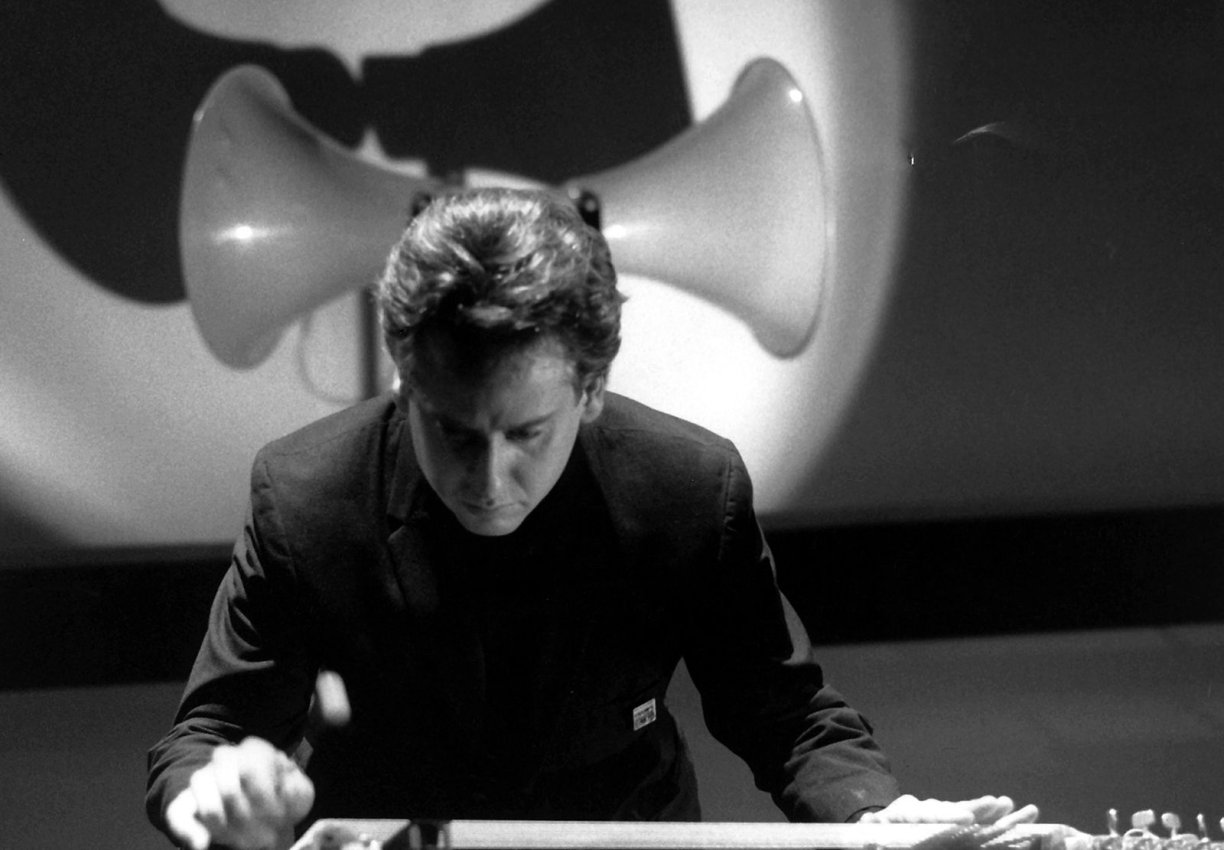In Turntable History / Spin Ensemble (2011), Dreyblatt creates a palette of signals and patterns derived from his own recordings of a Magnetic Resonance Imaging Scanner ('Siemens Magnetom Symphony Maestro Class') in a radiological practice in Berlin. Dreyblatt was fortunate to gain rare permission to record this device in operation with a technician from Siemens who manned the machine especially for these recordings, searching for software settings related to their resulting sonic output rather for scanning particular body areas. Dreyblatt treated the device as a giant Tesla coil, in which the alignment and resonances of a powerful magnetic field is gradually altered by rotating radio frequencies. He then analyzed and deconstructed the original recordings and grouped the audio segments by pitch, rhythm and density. 'Turntable History' was originally conceived as part of an audio-visual installation installed at the Singuhr Gallery in Berlin in 2009. The installation was captured in a recording was issued by Important Records in February, 2011. Turntable History / Spin Ensemble (2011), was premiered at a concert at the Goethe Institute in Boston on March 12, 2011
Nodal Excitation, 1979
The legendary performance of Dreyblatt’s solo work for his amplified “excited strings” bass:
“In the spring of 1979 I was approached to perform at a downtown performance festival in New York. I had been developing a repertoire of isolated percussive and bowed attacks, and these evolved into a continuous rhythmic technique in which I could excite chords of overtones above the fundamental. "The performance considers the location and influence of the acoustic Nodal Regions as identified on #12 and #11 unwound music wire stretched on an acoustic double bass body (40.5" speaking length). The integrity of a fundamental vibration is maintained for both strings at all times; all movement of pitch occurs in the overtone structure. A shorter speaking length is never created through "stopping" or "fretting" techniques. Rather, harmonic, partial vibrations are calculated, coaxed, and are occasionally isolated at the nodes of the string." – Arnold Dreyblatt
Arnold Dreyblatt (born in New York City, 1953) is a composer, performer and visual artist. He studied music with Pauline Oliveros, La Monte Young, and Alvin Lucier and has been based in Berlin, Germany since 1984. Among the second generation of New York minimal composers, Dreyblatt developed a unique approach to composition and music performance. As he began his music in the late 1970's in New York, he invented a set of new and original instruments, performance techniques, and a system of tuning and has formed and led numerous ensembles under the title "The Orchestra of Excited Strings". In 2007, he was elected to the German Academy of Art (Akademie der Künste, Berlin). He is currently Professor for Media Art at the Muthesius Academy of Art and Design in Kiel.
Dreyblatt has been composing music for his own and other ensembles for over thirty years. Often characterized as the most rock-oriented of American minimalists, Dreyblatt has cultivated a strong underground fan base for his transcendental and ecstatic music with his "Orchestra of Excited Strings". Dreyblatt's music has been released on such leading avante-garde labels as: Table of the Elements, Tzadik, Hat Art and Cantaloupe and his music has been performed by Jim O'Rourke, Kevin Drumm, David Grubbs, Jason Kahn, Bang On A Can All-Stars, Pellegrini Quartet, Crash Ensemble and countless others.

